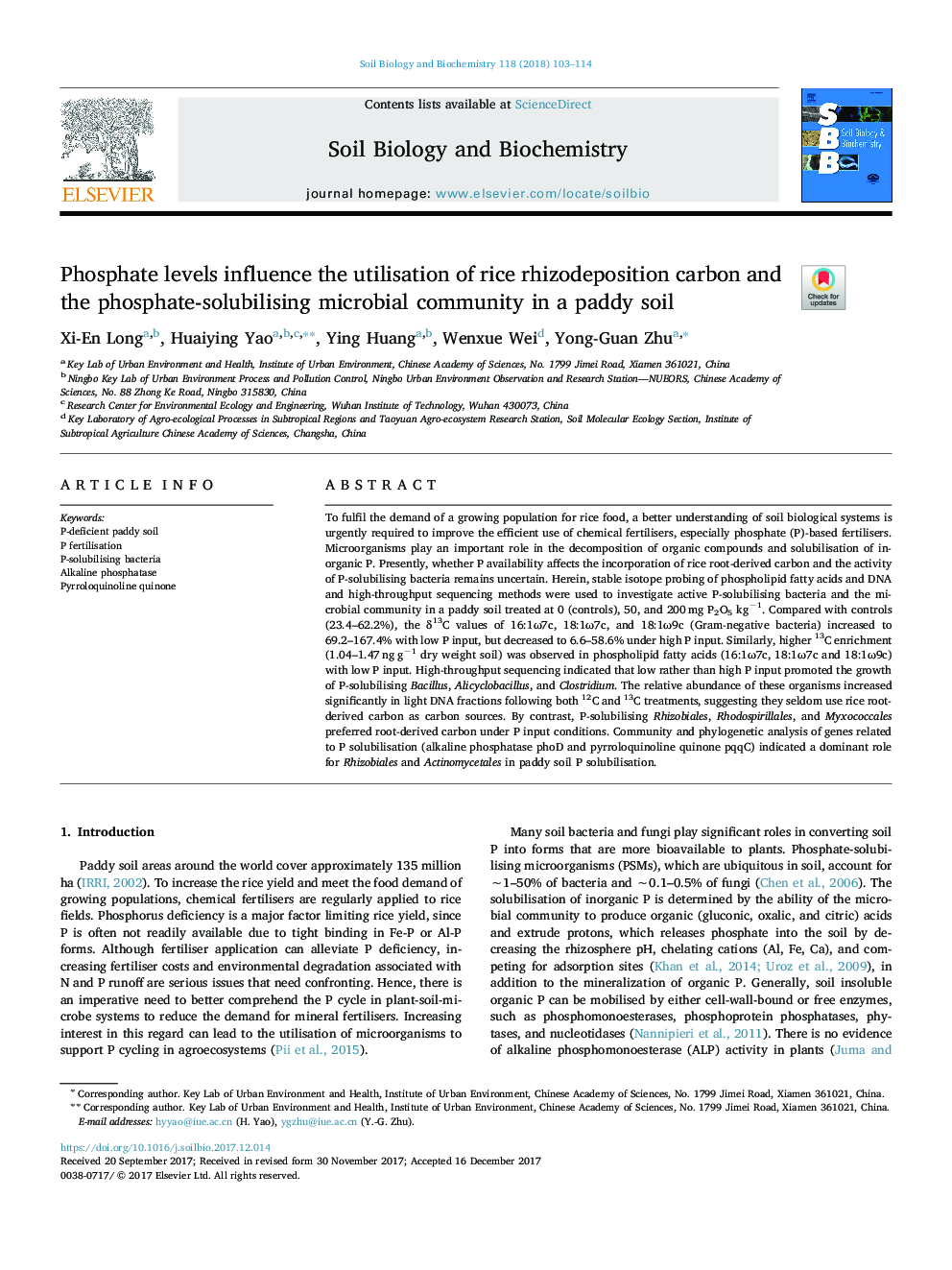| Article ID | Journal | Published Year | Pages | File Type |
|---|---|---|---|---|
| 8362983 | Soil Biology and Biochemistry | 2018 | 12 Pages |
Abstract
To fulfil the demand of a growing population for rice food, a better understanding of soil biological systems is urgently required to improve the efficient use of chemical fertilisers, especially phosphate (P)-based fertilisers. Microorganisms play an important role in the decomposition of organic compounds and solubilisation of inorganic P. Presently, whether P availability affects the incorporation of rice root-derived carbon and the activity of P-solubilising bacteria remains uncertain. Herein, stable isotope probing of phospholipid fatty acids and DNA and high-throughput sequencing methods were used to investigate active P-solubilising bacteria and the microbial community in a paddy soil treated at 0 (controls), 50, and 200â¯mg P2O5 kgâ1. Compared with controls (23.4-62.2%), the δ13C values of 16:1Ï7c, 18:1Ï7c, and 18:1Ï9c (Gram-negative bacteria) increased to 69.2-167.4% with low P input, but decreased to 6.6-58.6% under high P input. Similarly, higher 13C enrichment (1.04-1.47â¯ngâ¯gâ1 dry weight soil) was observed in phospholipid fatty acids (16:1Ï7c, 18:1Ï7c and 18:1Ï9c) with low P input. High-throughput sequencing indicated that low rather than high P input promoted the growth of P-solubilising Bacillus, Alicyclobacillus, and Clostridium. The relative abundance of these organisms increased significantly in light DNA fractions following both 12C and 13C treatments, suggesting they seldom use rice root-derived carbon as carbon sources. By contrast, P-solubilising Rhizobiales, Rhodospirillales, and Myxococcales preferred root-derived carbon under P input conditions. Community and phylogenetic analysis of genes related to P solubilisation (alkaline phosphatase phoD and pyrroloquinoline quinone pqqC) indicated a dominant role for Rhizobiales and Actinomycetales in paddy soil P solubilisation.
Related Topics
Life Sciences
Agricultural and Biological Sciences
Soil Science
Authors
Xi-En Long, Huaiying Yao, Ying Huang, Wenxue Wei, Yong-Guan Zhu,
